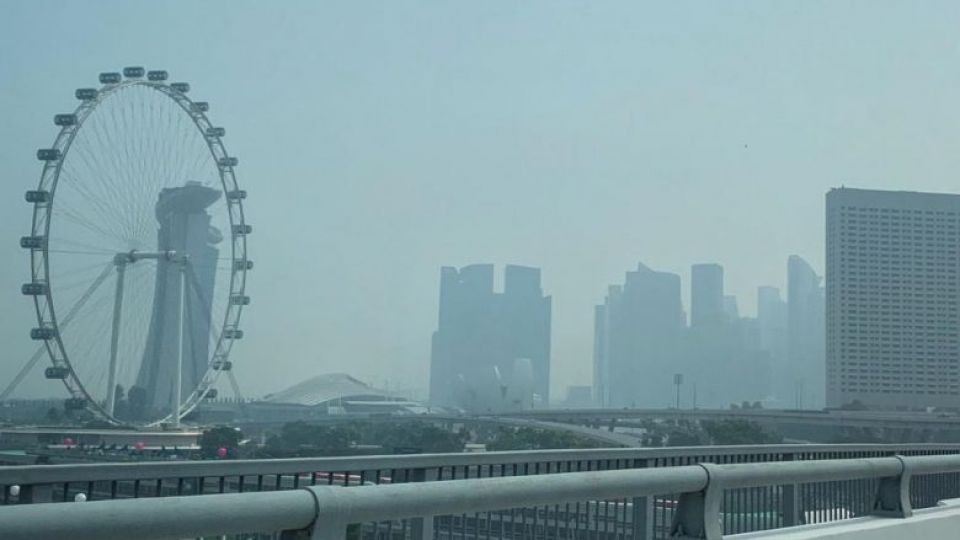September 23, 2019
Thundery showers forecast on Monday.
The showers expected on Monday (Sept 23) and the coming week could bring some relief from the haze, which brought air quality to unhealthy levels on Sunday.
The National Environment Agency said in its daily advisory that with winds forecast to blow from the east-northeast or east-southeast on Monday, “the shift in winds is expected to bring some showers over the region”.
“For the next few days, an increase in rain showers can be expected over the region, including Sumatra and Kalimantan,” said the NEA. “The showers may help to improve the hot spot and haze situation in Sumatra and Kalimantan.”
On Sunday, 246 hot spots were detected in Sumatra in Indonesia, and 474 hot spots in Kalimantan, which also affected parts of Peninsular Malaysia.
The NEA said the “slight deterioration” in the air quality on Sunday was due to smoke haze being blown in from Kalimantan by the prevailing winds.
On Monday, the 24-hour Pollutant Standards Index (PSI) is forecast to be between the high end of the moderate range and the low end of the unhealthy range.
The NEA advised healthy people to reduce prolonged strenuous exertion outdoors on Monday, and elderly people, pregnant women and children to minimise it, while people with chronic heart or lung disease should avoid it altogether.
At 11pm on Sunday, the 24-hour PSI for all regions was over 100, with the south recording the highest figure at 126, and the west the lowest at 113.
A PSI reading of zero to 50 indicates good air quality while a reading of 51 to 100 is in the moderate range. A reading of 101 to 200 is considered unhealthy. Air quality is considered “very unhealthy” when the PSI ranges from 201 to 300, and “hazardous” when the PSI reading is more than 300.
In addition to the 24-hour PSI, the one-hour PM2.5 concentration is a good indicator of current air quality. Measuring the average hourly concentration of PM2.5 particles, the dominant pollutant during haze episodes, it can help people gauge their level of immediate activity, such as whether they should go for a jog.
There are four bands on the PM2.5 concentration scale: 0 to 55 for normal, 56 to 150 for elevated, 151 to 250 for high, and very high for any higher readings.
In the south region, where the Formula One Singapore Grand Prix race was held, the one-hour PM2.5 concentration reading was in the “elevated” range of 78 at 8pm, though it did not deter the thousands who flocked to watch the race.
Stay-at-home mother Michelle d’Cruz, 48, said she and her two children, aged 10 and 13, were more concerned about the haze than her husband, a 47-year-old engineer.
She said: “The kids and I stayed in because the haze is a put-off and we didn’t want to risk getting sick with exams around the corner. My husband, on the other hand, went to the F1, regardless.”


